Tra abbandono e ricostruzione: note dai carteggi degli ufficiali impegnati in Calabria dopo il terremoto del 1783
Abstract
Il terremoto, con gli effetti distruttivi a volte irreversibili provocati su territori e comunità, ha determinato e ancora alimenta il fenomeno dell'abbandono. Un esito di cui subì le conseguenze una vasta area della Calabria devastata dal sisma nel 1783. In quest'occasione, attraverso la lettura della documentazione d'archivio prodotta dalla Cassa Sacra, ente preposto dal governo borbonico alla ricostruzione, si inizia ad indagare un tema rimasto spesso nell'ombra. Si cerca di cogliere tra le righe della documentazione ufficiale, i sentimenti e i dubbi che animavano le comunità all'indomani del sisma, in alcuni casi rassegnate ad abbandonare i propri paesi distrutti, in altri, invece, indotte a spostarsi in nuovi abitati da costruire, con esodi non sempre spontanei, avverso i quali, in alcuni casi, ci si oppose strenuamente scegliendo di rimanere. Non mancarono anche i casi in cui la convinta intenzione a "emigrare" altrove, venne invece impedita a tutela di interessi non del tutto coerenti con quei principi ufficiali che nell'orientare la ricostruzione, dovevano prefigurare una vita migliore per le popolazioni colpite.
Abandonment and Reconstruction: Notes from Correspondence of Officials after the 1783 Earthquake in Calabria
Earthquakes sometimes determine and continue to feed the phenomenon of abandonment with the irreversible destructive effects on territories and communities. An effect which a large area of Calabria suffered, devastated by an earthquake in 1783. This essay, through the reading of archival documentation produced by the “Cassa Sacra”, an institution appointed by the Bourbon government for reconstruction, investigates a theme which is often left in darkness. The reading of these documents tried to capture the feelings and doubts that animated the communities in the aftermath of the earthquake, between the lines of official documentation. In some cases, these communities were resigned to abandoning their destroyed villages, in others, however, they were induced to move to new built-up areas. The exoduses were not always spontaneous, and were sometimes strenuously opposed, while others chose to stay. There were also cases in which the convinced intention to “emigrate” elsewhere was, instead, prevented, in order to protect certain interests that were not entirely coherent with official guidelines, which, in promoting relocation, always prefigured a better life elsewhere for the affected populations.
Parole chiave
Full Text
PDFDOI: https://doi.org/10.14633/AHR219
Refback
- Non ci sono refbacks, per ora.
Copyright (c) 2020 Bruno Mussari

This work is licensed under a Creative Commons Attribution-NonCommercial 4.0 International License.
........................................................................................................................................................................................................................................................................................................................................................
ArcHistoR è una rivista open access e peer reviewed (double blind), di Storia dell’architettura e Restauro, pubblicata dall’Università Mediterranea di Reggio Calabria. La rivista ha cadenza semestrale. È una rivista di Classe A (ANVUR) per l’Area 08 - Ingegneria civile ed Architettura, settori C1, D1, E1, E2, F1.
Comitato scientifico internazionale
Maria Dolores Antigüedad del Castillo-Olivares (Universidad Nacional de Educación a Distancia de España), Monica Butzek (Kunsthistorisches Institut in Florenz), Jean-François Cabestan (Université Paris 1 - Panthéon Sorbonne), Alicia Cámara Muñoz (Universidad Nacional de Educación a Distancia de España), David Friedman (Massachussets Institute of Technology), Alexandre Gady (Université Paris-IV-Sorbonne), Jörg Garms (Universität Wien), Miles Glenndinning (Scottish Centre for Conservation Studies, University of Edinburgh), Mark Wilson Jones (University of Bath), Loughlin Kealy (University College Dublin), Paulo Lourenço (Department of Civil Engineering, University of Minho), David Marshall (University of Melbourne), Werner Oechslin (ETH, Zurich, Stiftung Bibliothek Werner Oechslin, Einsiedeln), José Luis Sancho (Dirección de Conservación de Bienes Histórico-Artísticos, Palacio Real, Madrid), Dmitrij O. Švidkovskij (Moscow Architectural Institute, MARCHI)
Comitato direttivo
Tommaso Manfredi (direttore responsabile), Giuseppina Scamardì (direttore editoriale), Antonello Alici, Salvatore Di Liello, Fabrizio Di Marco, Paolo Faccio, Mariacristina Giambruno, Bruno Mussari, Annunziata Maria Oteri, Francesca Passalacqua, Edoardo Piccoli, Renata Prescia, Nino Sulfaro, Fabio Todesco, Guglielmo Villa
........................................................................................................................................................................................................................................................................................................................................................
Laboratorio CROSS. Storia dell'architettura e Restauro

ISSN 2384-8898

This work is licensed under a Creative Commons Attribution-NonCommercial 2.0 Generic License.

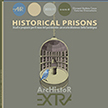
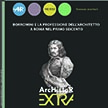


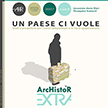
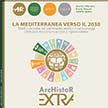
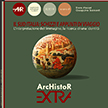
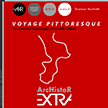
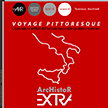
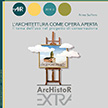
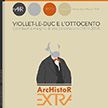

_2.jpg)



